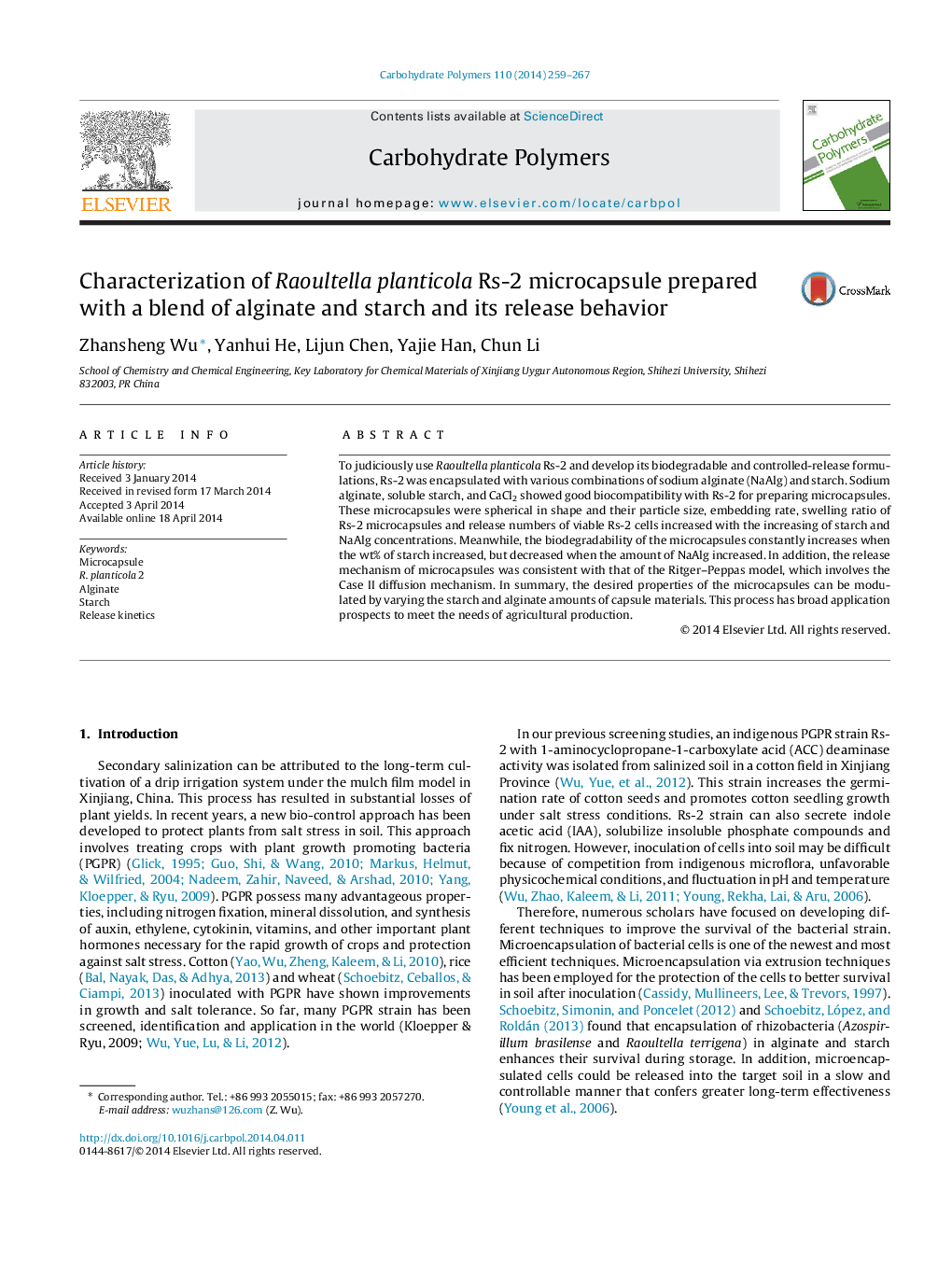| Article ID | Journal | Published Year | Pages | File Type |
|---|---|---|---|---|
| 1385831 | Carbohydrate Polymers | 2014 | 9 Pages |
•Rs-2 microcapsule prepared with alginate and starch has desired release behavior.•The release mechanism of Rs-2 capsule was consistent with the Ritger–Peppas model.•Encapsulated Rs-2 has broad application prospect to meet the needs of plant growth.
To judiciously use Raoultella planticola Rs-2 and develop its biodegradable and controlled-release formulations, Rs-2 was encapsulated with various combinations of sodium alginate (NaAlg) and starch. Sodium alginate, soluble starch, and CaCl2 showed good biocompatibility with Rs-2 for preparing microcapsules. These microcapsules were spherical in shape and their particle size, embedding rate, swelling ratio of Rs-2 microcapsules and release numbers of viable Rs-2 cells increased with the increasing of starch and NaAlg concentrations. Meanwhile, the biodegradability of the microcapsules constantly increases when the wt% of starch increased, but decreased when the amount of NaAlg increased. In addition, the release mechanism of microcapsules was consistent with that of the Ritger–Peppas model, which involves the Case II diffusion mechanism. In summary, the desired properties of the microcapsules can be modulated by varying the starch and alginate amounts of capsule materials. This process has broad application prospects to meet the needs of agricultural production.
